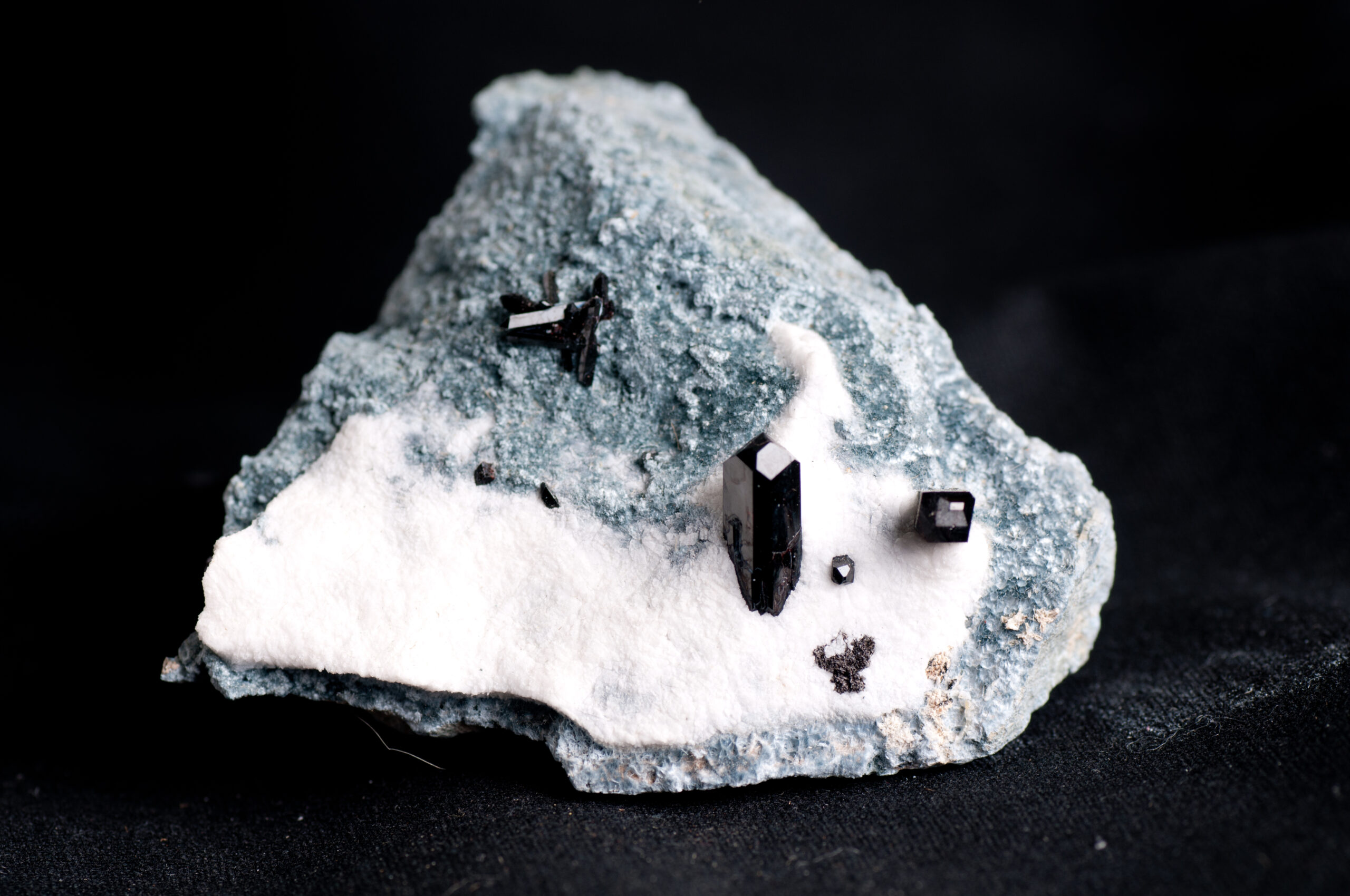One thing that we have to note about zeolites is that they are heavily based on science. Zeolites’ properties are attractive to chemists, technologists, and mineralogists. Today, they are known to be hydrated tectoaluminosilicium oxides that follow a distinct formula.
The formula is: MxM’yNz [TmT’n…O2(m+n)–ε (OH)2z] (OH)br (aq)p · qQ,(1), where M, M’ are exchangeable and non-exchangeable cations; N are non-metallic cations (typically removable on heating); (aq) is chemically bonded water (or other closely held ligands of T-atoms); Q are sorbate molecules; and T, T’ are, among others, Si, Al, Be, B, Ga, Ge, and P. Because of their intricate chemical makeup, this formula is helpful for distinguishing natural zeolites from those synthesized from natural or waste materials.
Zeolites are crystalline inorganic polymers made up of [SiO4] and [AlO4] tetrahedra packed with ions and water molecules. Their structure gives them unique characteristics, such as low population density, high humidity, shape-selectivity, crystallinity, sorption, ion exchange, and catalytic action.
Read on to discover more about zeolites, natural zeolites, and synthetic zeolites today.
Table of Contents
What to Know about Natural Zeolites
Igneous zeolites predominate in hydrothermal sediments. They can be found in crystallized igneous and metamorphic minerals and microscopic sedimentary grains. The vast zeolite-rich ocean sediments are inaccessible to people. These elements may also be necessary for tuffs and clay. Zeolite sediments are extremely useful due to their surface retention and open-pit mining. Clinoptilolite, mordenite, and chabazite are examples of natural operational zeolites.
Zeolites are drawn to heavy metals and ammonium ions. As a result, zeolites are used in environmental protection and cultivation. Zeolite-filled sorption columns can remove heavy metals and radioactive compounds from effluent. Ammonium ions can be removed from municipal, commercial, and agricultural waste using similar methods. In horticulture, zeolites can be used to remediate soil, fish ponds, feed, and transport agrochemicals. Catalytic and antibacterial modifications are also being explored. Many people use them as cat litter.
Natural zeolites have few industrial uses due to their crystal structure-dependent properties. Larger gas molecules and organic substances cannot be absorbed because the channel diameters are too tiny. (0.30–4 nm for clinoptilolite, the most prevalent mineral). There are nonrenewable zeolite deposits. Numerous laboratory efforts were made to make zeolites with specific parameters for molecular sieves and adsorbents.
What to Know about Synthetic Zeolites
Zeolites are minerals, but over a hundred synthetic zeolite shapes are known. Zeolites form spontaneously from volcanic ash and basic lake water. Several millennia have passed. Hydrothermal processes can be simulated in the laboratory using high temperatures, pressure, and natural or manufactured silicates. Synthesis requires energy, pure substrates, and equipment. The merchandise could be more expensive than natural zeolite. As a result, researchers are looking for cheaper and more abundant substrates to make zeolites and reduce reaction costs. The study of zeolite synthesis, which uses natural or waste materials, is driven by environmental concerns.
Zeolites: Understanding 3.1. Substrates and Products
Zeolite can be made from clay minerals (kaolin, haloisite), volcanic glasses (perlite, pumice), or diatomites. However, zeolites are made from fly ash, rice husk, and enlarged perlite detritus.
Of course, synthesis using raw materials with a complex chemical composition will not give the product 100% purity, and zeolites obtained in this way are excluded from many important commercial applications; however, the use of natural raw materials for the production of zeolites has economic advantages when compared with the use of synthetic substrates.
The Beauty of Being Informed about Zeolites
When it comes to understanding zeolites, we must first learn about their composition and study scientific research. Through such an education, we can be more interested in zeolites and appreciate what they can do for our bodies.
If you want to learn more about the benefits of zeolite, Zeolite for Detox is your ultimate source. Learn with us and engage in insightful discussions from trusted sources. Subscribe to our newsletter today!
Recent Posts
You love watching your little one grow and learn new things every day, but early signs of speech delay can sometimes go unnoticed. Observing your toddler's developmental milestones is crucial in...
Zeolite, a volcanic mineral known for its detoxification properties, is gaining popularity in the health industry. Parents often wonder if it is safe and effective for their children. In this...

